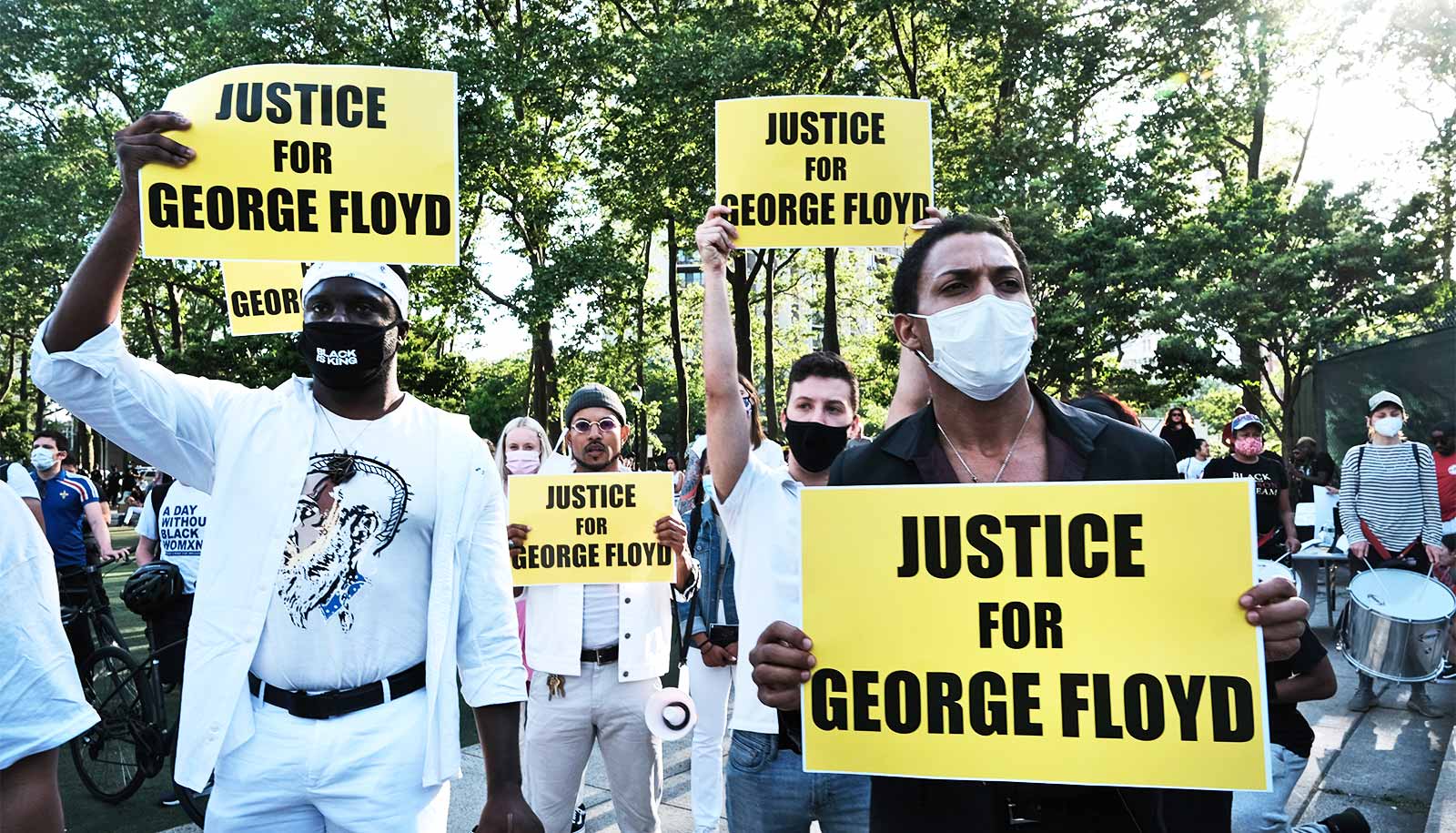Biracial youth who identify with the races of both of their parents tend to be more socially progressive and liberal than young people with a single racial background.
The multiracial population is one of the fastest-growing groups in the United States, says Lauren Davenport, an assistant professor of political science at Stanford University and author of a new book, Politics Beyond Black and White (Cambridge University Press, 2018).
Curious to know more about how this group aligns politically, Davenport analyzed data from the US Census and national surveys of college students. She also conducted in-depth interviews with biracial youth to learn what goes into their self-identification and shapes their political attitudes.
Gender and socioeconomic status are among the strongest predictors of how a person of mixed race chooses to identify, Davenport found. Biracial women are more likely than men to identify with both of their races rather than one, and biracial people from more affluent backgrounds are more likely to identify as just white.
Davenport recently talked about her findings and their implications for America’s future.
How did you embark on this research project?
The multiracial population is one of the fastest-growing demographic groups in the US. Interracial and interethnic marriages now account for almost 20 percent of new marriages. And since 2000, the number of people who identify with more than one race more than doubled, while we saw almost no growth in the single-race population.
Racial group attachments are strongly predictive of political attitudes and behavior. I wanted to understand how Americans of mixed-race backgrounds align themselves politically, and also how they construct their racial identities.
We haven’t known much about why people of mixed-race backgrounds racially identify the way they do, and whether identification as multiracial signals a decreased commitment to issues affecting minority communities.
Who are biracial people in the context of your research?
Researchers who study race and ethnicity constantly grapple with the issue of racial categories and language. By themselves, race and ethnicity are not intrinsically meaningful, yet we also understand race and ethnicity to be inherited traits.
I categorize people who have parents of two different races as biracial, focusing my research on the three largest biracial groups in the US: people of black-white, Latino-white, and Asian-white backgrounds.
What are some of the factors that predict the way biracial people are likely to identify?
Evidence from surveys and interviews shows that biracials’ identities are the product of their interpersonal interactions, environment, cultural practices, appearance, and—most compellingly—gender and socioeconomic status.
Gender is one of the most important predictors of racial identity, with women more likely than men to incorporate multiple races into their self-identification, all else being equal. This finding emerges across black-white, Asian-white, and Latino-white biracials, though the effect is most pronounced among black-white biracials.
Social class… consistently predicts how biracials identify. Put simply: ‘Money whitens.’
Biracial men are relatively more inclined to identify with their minority race, which can be attributed in part to the gendered nature of racial prejudice in the US. Men of all racial backgrounds are more likely to say they experience discrimination, and biracial men are more conscious than biracial women of their status in society as people of color.
Social class also consistently predicts how biracials identify. Put simply: “Money whitens.” Biracial people who grew up in more affluent families or in more affluent neighborhoods are more likely to identify as white and less likely to identify with their minority race. Higher incomes enable biracials to display external markers of wealth and increase their social mobility; when coupled with their mixed-race appearance, this can lead biracials to be perceived as white.
That said, relatively few biracial people identify as white—only 14 percent in my sample. Among black-white biracials, the rate is even lower: Just 5 percent identify as white. The category “white” does not extend to biracial blacks as it does to biracial Asians and Latinos.
What did you find about the political attitudes and leanings of the mixed-race groups you studied?
How people see themselves racially is predictive of their political views, even after accounting for many other characteristics, such as their income, religion, and where they grew up. For example, biracial people who label themselves as white-only are less likely than those identifying as non-white to believe that racial discrimination is a major problem in America and are less inclined to support policies to alleviate racial inequalities. In addition, biracial whites express less support for social issues, including same-sex marriage and women’s rights.
In contrast, biracial people who identify as multiracial or with their minority race only are more likely to perceive discrimination and social injustice and to endorse policies to remedy racial disparities. Identification as multiracial is also associated with distinctly progressive opinions on social issues.
There is a worldview associated with multiracial identification that reflects a political attachment to marginalized groups, including racial minorities and members of the LGBT community.
Why is it important to study the political implications of this fast-growing mixed-race population?
The American public is polarized politically, notably on issues of race, ethnicity, and immigration. There are profound attitudinal divides between racial groups—particularly between whites and non-whites—when it comes to issues like gun control, a proposed U.S.-Mexico border wall, and the Black Lives Matter movement.
Meanwhile, the multiracial population has soared and is the fastest-growing youth group in the country. This group is poised to shape the electoral balance of power.
Whether they advocate for socially, economically, and racially progressive causes or express a decreased commitment to such causes, this group will affect our political landscape for decades to come.
Source: Stanford University



